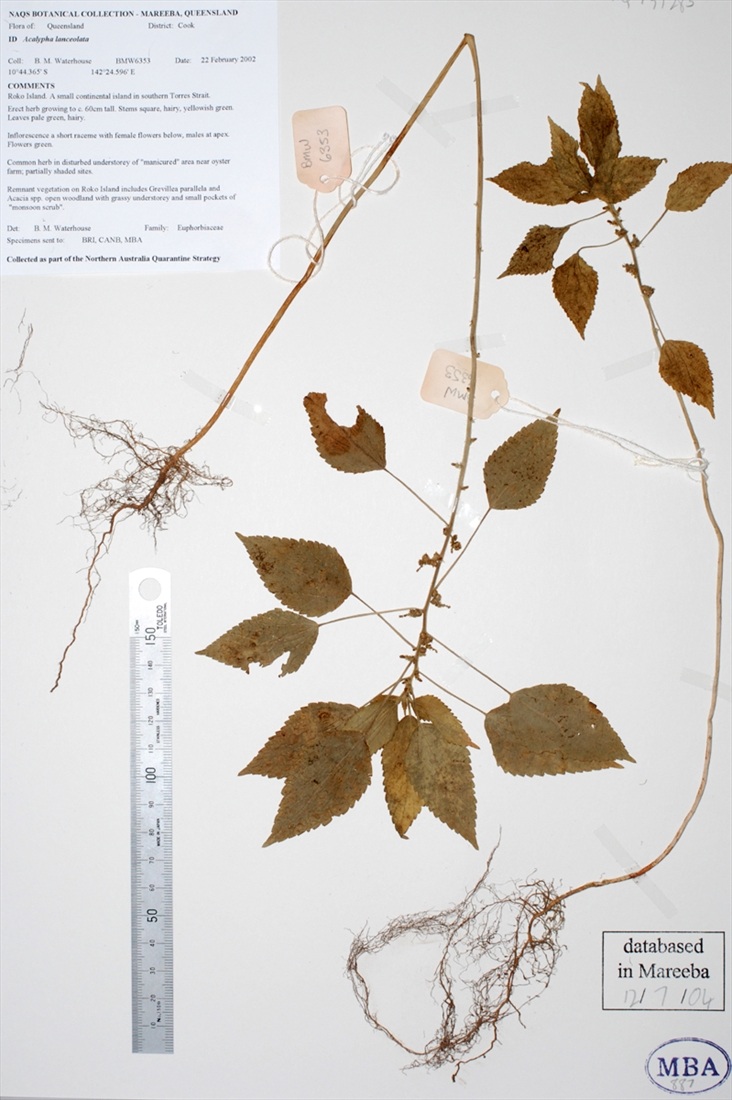Australian Tropical Rainforest Plants - Online edition
Acalypha lanceolata Willd.

Willdenow, C.L. von (1806) Species Plantarum Edn. 4 4: 524. Type: J.Burman, Thes. Zeylan.: 205 (1737) t.93,fig.2.
Erect sparsely branched annual herb up to 60 cm tall with cylindrical green stems.
Inflorescence up to 25 mm long, racemes consists of male flowers in the upper part and female flowers in the lower part. Male flowers: Flowers ca. 0.1 mm diam. Tepals about 0.3 mm long. Stamens ca. 0.4 mm long. Female flowers: Flowers ca. 1 mm diam. surrounded by deeply lobed bracts ca. 1.5 mm long. Tepals ca. 0.4 mm long. Ovary densely clothed in hairs. Styles lacinate, ca. 1 mm long. Ovules one per locule.
Seeds globose to ovoid, 1.1-1.8 x 0.8-1.1 mm, faintly patterned and light brown. Embryo about 1 mm long, radicle shorter than the cotyledons or as long as the cotyledons.
Becomes a weed of cultivation (Forster 1994).





